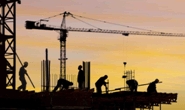Analysis

June 20, 2020
Construction Employment Jumps in May
Written by Sandy Williams
Construction employment rebounded in May in 45 states and D.C., according to an analysis of government data by the Associated General Contractors of America. The jump in employment follows the loss of nearly one million jobs in April, but may be short-lived, said AGC officials.
“The widespread uptick in construction employment in May is welcome news following a month in which industry employment shrank in all but one state,” said Ken Simonson, the association’s chief economist. “Our association’s latest survey shows many firms have been recalling or adding employees in recent weeks, thanks in part to rapid receipt of Paycheck Protection Program loans. But only about one-fifth of firms report winning new or expanded projects, while almost one-third of firms say an upcoming project has been canceled.”
Of the 45 states with construction job gains over the month, Pennsylvania had the largest increase (77,400 jobs or 48.9 percent), said AGC. Michigan had the largest percentage increase (51.4 percent, 50,500 construction jobs). Construction employment declined from April to May in five states. Hawaii lost the largest number and highest percentage of construction jobs (-700 jobs, -1.9 percent).
From May 2019 to May 2020, 12 states added construction jobs while 38 states and D.C lost jobs. Utah added the most construction jobs over the year (8,200 jobs, 7.6 percent). South Dakota—the only state to add construction jobs in April—had the largest year-over-year percentage increase (10.3 percent, 2,400 jobs). Both states set new highs for construction employment, in a series dating to 1990. New York lost the most construction jobs over the year (105,300 jobs, -25.9 percent). The largest percentage decline occurred in Vermont (-26.1 percent, -4,000 jobs).
AGC warned that the long-term impacts of the pandemic are only now being appreciated. To avoid a second wave of job losses, the association urges Congress and the Trump administration to enact liability reform, pass new infrastructure funding measures and find a way to incentivize laid-off employees to return to work.
“The economic boost that comes with lifting economic lockdowns will not be enough to sustain long-term growth for the industry,” said Stephen E. Sandherr, the association’s chief executive officer. “Boosting infrastructure spending, protecting firms that are operating safely and encouraging people to return to work will help convert short-term gains into longer-term growth.”







